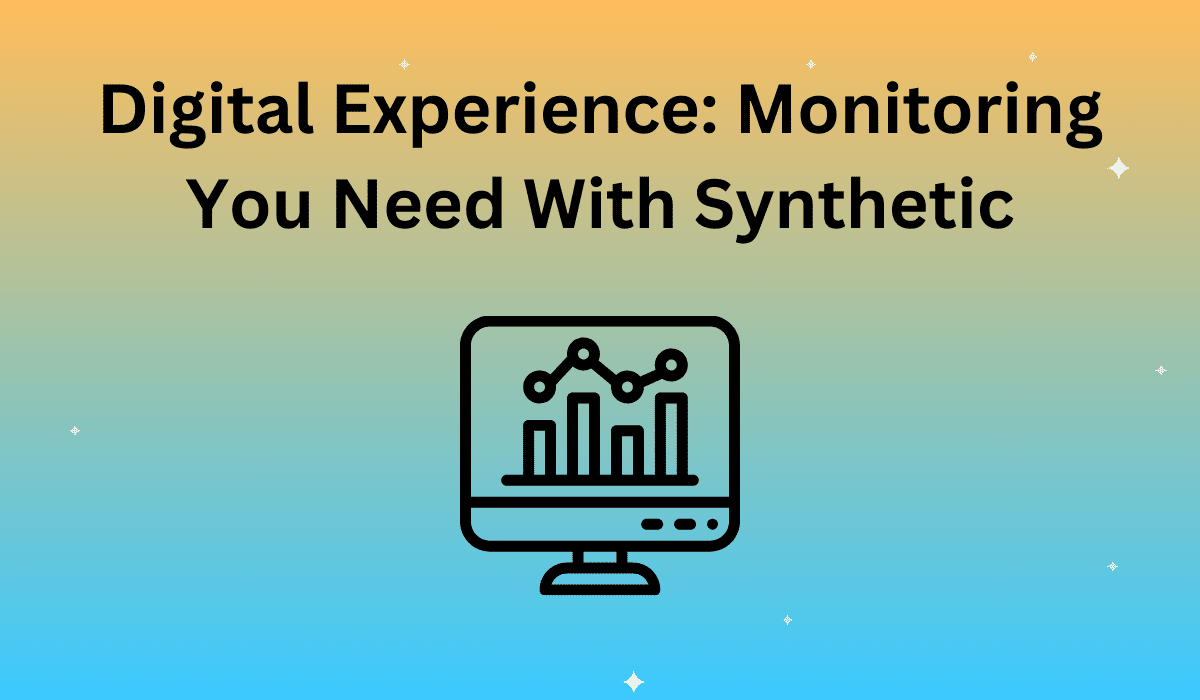By Sven Hammar, CPO of Apica
Digital experience monitoring isn’t new, and there are many ways for enterprise companies to slice that pie depending on IT and business needs. The one unifying challenge, in all cases, is finding the right combination of technologies that will not only meet customers’ expectations, but also help transform the way digital experiences are delivered.
With so much riding on the quality of digital experiences, monitoring those experiences has become a critical part of any business’s success. Choosing the right digital experience monitoring strategy is easier said than done, and many companies are already using some form of APM/RUM based solution. To get a truly comprehensive and global view into your uptime and user experience, you should complement this approach with synthetic monitoring of your applications and API endpoints.
How does Synthetic Monitoring help?
Synthetic monitoring is the active monitoring of websites and APIs to deliver analysis to optimize customers’ experiences by monitoring each step of the user journey on your website 24/7 with predictive performance. This provides traffic and alerts even during times when you don’t have any real users accessing the application, allowing you to respond before users are affected.
Through well designed behavioral scripts, synthetic agents can simulate customer experiences and business transactions. By continuously monitoring these paths, companies achieve deeper insights into performance, availability and service quality.
Synthetic browser/mobile monitoring, combined with API backend quality monitoring, provides a holistic view of uptime as well as highlighting regional network problems affecting the user experience. With the impact of social media and online interactions, not having timely information about an application’s user experience will quickly and negatively affect a company’s reputation.
Today, organizations depend on external and internal APIs, and without effective monitoring of these transactions from both inside and out, you won’t have the knowledge you need to quickly resolve user experience issues. Additionally, it is nearly impossible to monitor third parties dependencies without the API dimension.
If Synthetic is so valuable, why aren’t others getting it right?
Systems are becoming more advanced and are now typically composed of many different layers, with some important dependencies even living outside of your datacenter.
Traditional approaches deliver less coverage and not enough depth into these types of applications. Without dedicated synthetic traffic, it is hard to differentiate real problems from internal failovers, or vice versa, leading to situations where internal monitoring is showing green lights, but users still can’t logon. The more complex the applications become, the more opportunity for internal monitoring to not reflect the reality of the users’ experiences. Because synthetic monitoring simulates usage from the user’s perspective, these “false negatives” are easy to catch.
Ultimately, internal monitoring alone will create a gap in your monitoring, leaving you constantly trying to keep up with error after error, and an incomplete picture of how these errors relate to the experience of your users. For important applications, whether customer facing or internal, you can’t leave anything to chance. It is critical to see and understand all the issues affecting your users to be able to guarantee uptime.
In order to have complete coverage, you must combine APM with synthetic monitoring to ensure you not only have the power, but also the ease of use to achieve true digital experience monitoring. Apica‘s modern synthetic monitoring solution proactively monitors websites, applications and APIs around the clock and identifies availability and performance issues before they affect your customers.
Digital Experience Monitoring provides critical analysis and understanding of how performance impacts user experiences as well as visibility into end-to-end performance, regardless of where applications are running. Synthetic monitoring is the perfect DEM option for providing the comprehensive, proactive and actionable information your company needs to deliver exceptional experiences to your users.











